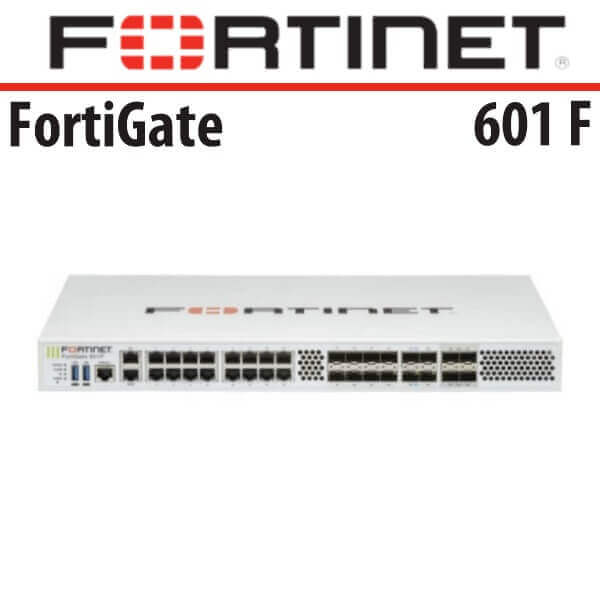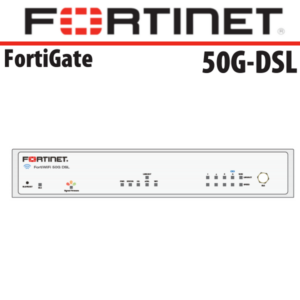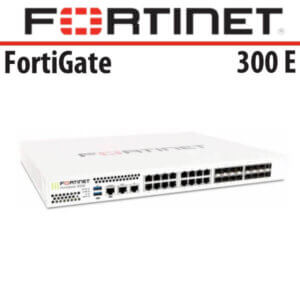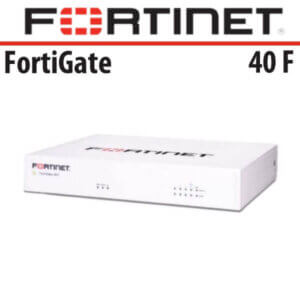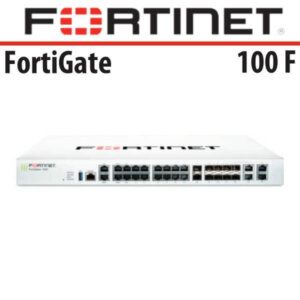Description
Fortigate601F Firewall Nigeria
The Fortigate601F Nigeria Next-Generation Firewall (NGFW) is a powerful security solution that uses artificial intelligence (AI) and machine learning (ML) to detect and block threats. It provides comprehensive protection for networks of all sizes, from small businesses to large enterprises. The Fortigate601F Nigeria NGFW uses AI and ML to enhance network visibility and detect potential threats from applications, users, and devices before they can cause damage. It also integrates with Fortinet’s security fabric platform to provide automated and comprehensive network protection.
In addition to its AI and ML capabilities, the Fortigate601F Nigeria NGFW also offers a variety of other features, including:
- Advanced edge protection, including web security, content security, and device security
- Network segmentation and secure SD-WAN to simplify complexity and reduce risk in hybrid IT networks
- Universal Zero Trust Network Access (ZTNA) to restrict access to authorized users and reduce the risk of lateral threats
- Rapid threat defense and SSL inspection at the network perimeter without compromising performance
Overall, the Fortigate601F Nigeria NGFW is a comprehensive and sophisticated security solution that can help organizations of all sizes protect their networks from a wide range of threats.
Fortigate601F Nigeria Highlights
- Gartner Magic Quadrant Leader for both Network Firewalls and WAN Edge Infrastructure.
- Security-Driven Networking FortiOS delivers converged networking and security.
- State-of-the-Art Unparalleled Performance with Fortinet’s patented / SPU / vSPU processors.
- Enterprise Security with consolidated AI / ML-powered FortiGuard Services.
- Deep Visibility into applications, users, and devices beyond traditional firewall techniques.
Hardware Features
Trusted Platform Module (TPM)
The Fortigate601F Nigeria features a dedicated module that hardens physical networking appliances by generating, storing, and authenticating cryptographic keys. Hardware-based security mechanisms protect against malicious software and phishing attacks.
Access Layer Security
FortiLink protocol enables you to converge security and the network access by integrating the FortiSwitch into the FortiGate as a logical extension of the NGFW. These FortiLink enabled ports can be reconfigured as regular ports as needed.
Specifications
| Interfaces and Modules | |
| Hardware Accelerated GE RJ45 Interfaces | 16 |
| Hardware Accelerated GE SFP Slots | 8 |
| Hardware Accelerated 10GE SFP+ / GE SFP Slots | 4 |
| Hardware Accelerated 25GE SFP28/ 10GE SFP+ Ultra Low Latency Slots | 4 |
| GE RJ45 MGMT/HA Ports | 2 |
| USB Ports | 2 |
| RJ45 Console Port | 1 |
| Onboard Storage | 2x 240 GB SSD |
| Included Transceivers | 2x SFP (SX 1 GE) |
| System Performance — Enterprise Traffic Mix | |
| IPS Throughput 2 | 14 Gbps |
| NGFW Throughput 2, 4 | 11.5 Gbps |
| Threat Protection Throughput 2, 5 | 10.5 Gbps |
| System Performance and Capacity | |
| IPv4 Firewall Throughput (1518 / 512 / 64 byte, UDP) | 139 / 137.5 / 70 Gbps |
| IPv6 Firewall Throughput (1518 / 512 / 64 byte, UDP) | 139 / 137.5 / 70 Gbps |
| Firewall Latency (64 byte, UDP) | 4.12 μs / 2.5 μs* |
| Firewall Throughput (Packet per Second) | 105 Mpps |
| Concurrent Sessions (TCP) | 8 Million |
| New Sessions/Second (TCP) | 550 000 |
| Firewall Policies | 10 000 |
| IPsec VPN Throughput (512 byte) 1 | 55 Gbps |
| Gateway-to-Gateway IPsec VPN Tunnels | 2000 |
| Client-to-Gateway IPsec VPN Tunnels | 50 000 |
| SSL-VPN Throughput 6 | 4.3 Gbps |
| Concurrent SSL-VPN Users (Recommended Maximum, Tunnel Mode) | 10 000 |
| SSL Inspection Throughput (IPS, avg. HTTPS) 3 | 9 Gbps |
| SSL Inspection CPS (IPS, avg. HTTPS) 3 | 7500 |
| SSL Inspection Concurrent Session (IPS, avg. HTTPS) 3 | 840 000 |
| Application Control Throughput (HTTP 64K) 2 | 32 Gbps |
| CAPWAP Throughput (HTTP 64K) | 64.5 Gbps |
| Virtual Domains (Default / Maximum) | 10 / 10 |
| Maximum Number of FortiSwitches Supported | 96 |
| Maximum Number of FortiAPs (Total / Tunnel) | 1024 / 512 |
| Maximum Number of FortiTokens | 5000 |
| High Availability Configurations | Active-Active, Active-Passive, Clustering |

